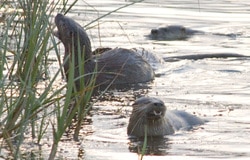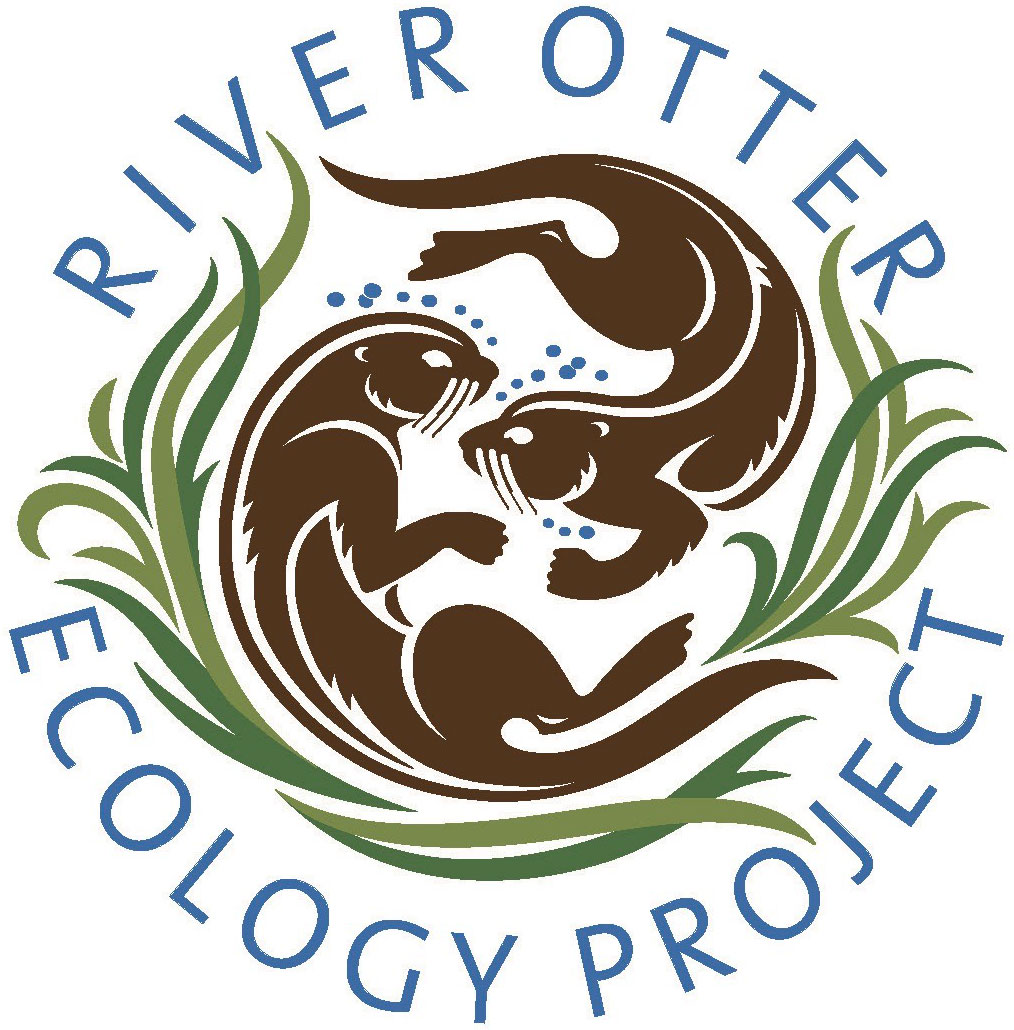By guest blogger Rich Stallcup
October 4, 2012
Sometime around 1.8 million years ago, Eurasian River Otters (Lutra lutra) crossed the Bering Land Bridge onto the North American continent. Analysis of molecular clustering suggests that North American River Otters (Lontra canadensis) evolved from Eurasian River Otters over time after that. From that natural introduction to a new continent, dispersal was quite thorough over time and the divergent species spread throughout North America.
From the first human-recorded history of what was to become Marin County, river otters were an evident part of all fresh-water and some estuarine, habitats. After Europeans began to “settle” the West, mammal trapping for pelts became a popular and profitable business and it is likely that River Otters and their cousins the Mink, steadily declined until both were extirpated by 1960. Sea otters (Enhydra lutris) had been extirpated by hunters from the Marin coast before 1900, and their populations have not recovered, nor have the Mink.

Photo by Anthony Brewer
From 1960 to 1987 River Otters were totally missing in Marin as far as anyone knew. In May, 1987 I was stoked and elated to find three of these excellent creatures on middle Walker Creek about three miles southwest of the town of Tomales. Because the species is known to travel overland between watersheds, and are known to scoot through salt water, including the ocean, I have no doubt that these pioneers came from the nearby Russian River population that had been spared from complete annihilation.
River Otters have repopulated vigorously, and are now seen again in Marin ponds, creeks and bays and occasionally the ocean. It’s likely that the clean-up of waterways, banning of DDT, and protection of river otters from trapping in California as of 1962 were among the changes that helped river otters thrive again. Clean, unmolested pure fresh waterways and marshes as well as safe corridors to upland breeding habitat and excellent riparian (streamside) vegetation are as crucial to the success of River Otters as are the small aquatic animals they hunt and forage for food.
